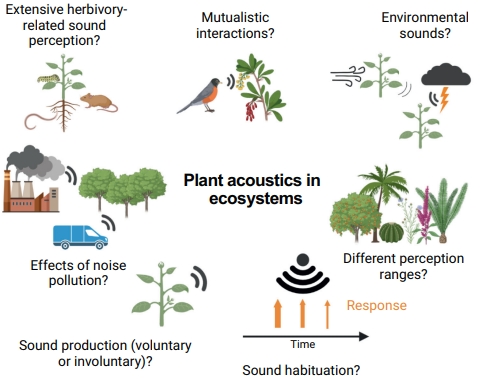Plant hearing: the molecular underpinnings

Significant questions on plant acoustics in ecosystems
Plant hearing: the molecular underpinnings
In a traditional stimulus-response model, an organ or cell senses a stimulus, which is then translated into a signal that triggers a reaction. A molecular actor is needed at every stage – in a hierarchical manner, a receptor, a second messenger, and a relay of further downstream molecules that elicit a reaction through particular biochemical changes. Physiomorphological changes, variations in phytohormone levels, and alterations in gene expression are possible responses. The molecular front of plant acoustics has made substantial progress in the last ten years; numerous important molecular events and players have been found, and numerous others have been hypothesized. It is still unknown how these occurrences are related to one another. The changes in molecules caused by sound are covered in the following.
